Here’s an interesting project, imagining a Forest City of the future in Gabon, Central Africa, a country rich for its forests, rivers and biodiversity.
Like all developing countries, their challenge is to decide whether they want to follow the principles of industrial cities or they want invent an ecological model that attracts talented people and inspires the world.
In this project, architecture practice Built by Associative Data, investigate how such a city might look and how it might function. They dive into the structure of the city, development patters, circular economy thinking, what a forest based economy may be like and much much more.
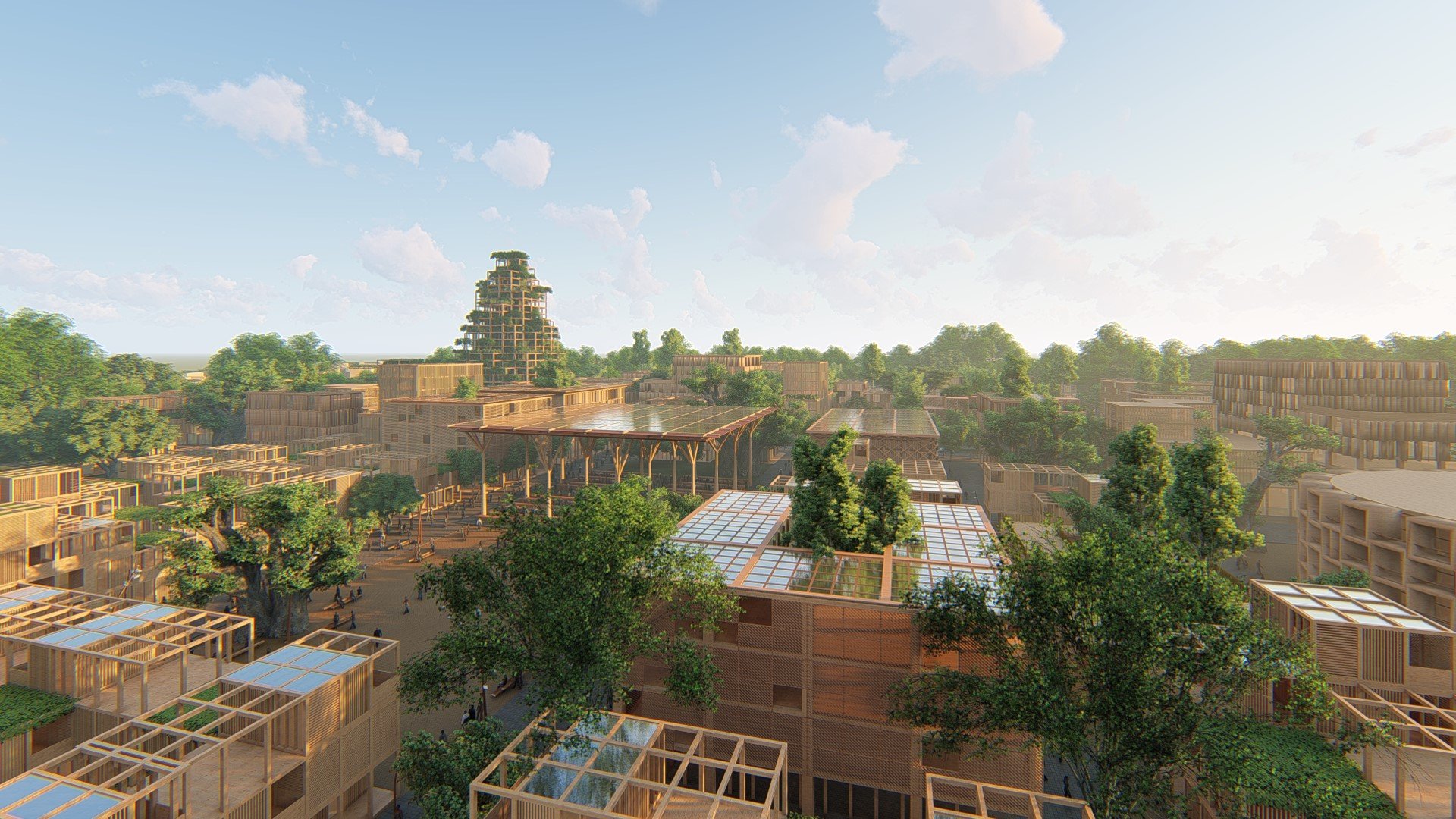
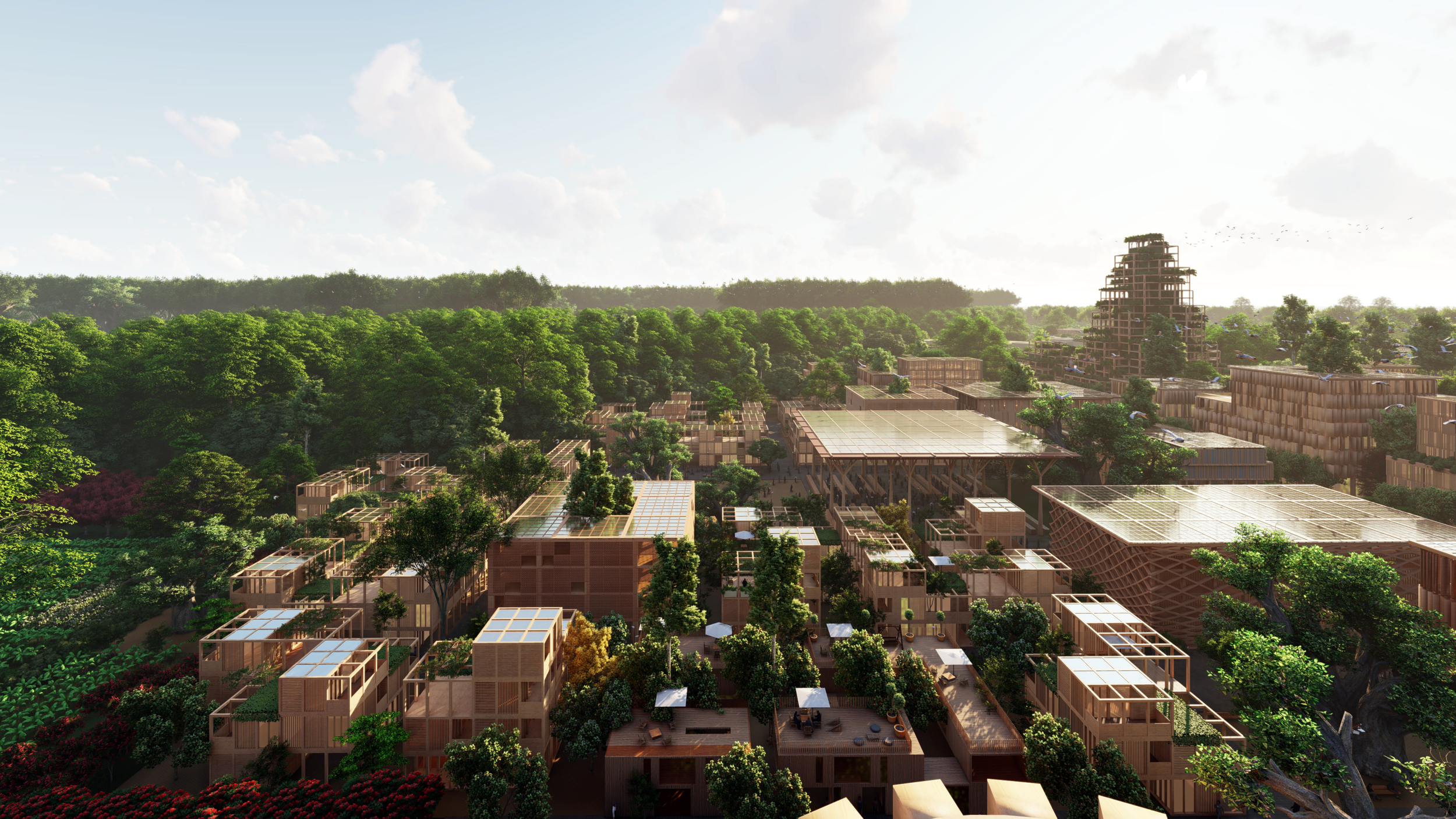
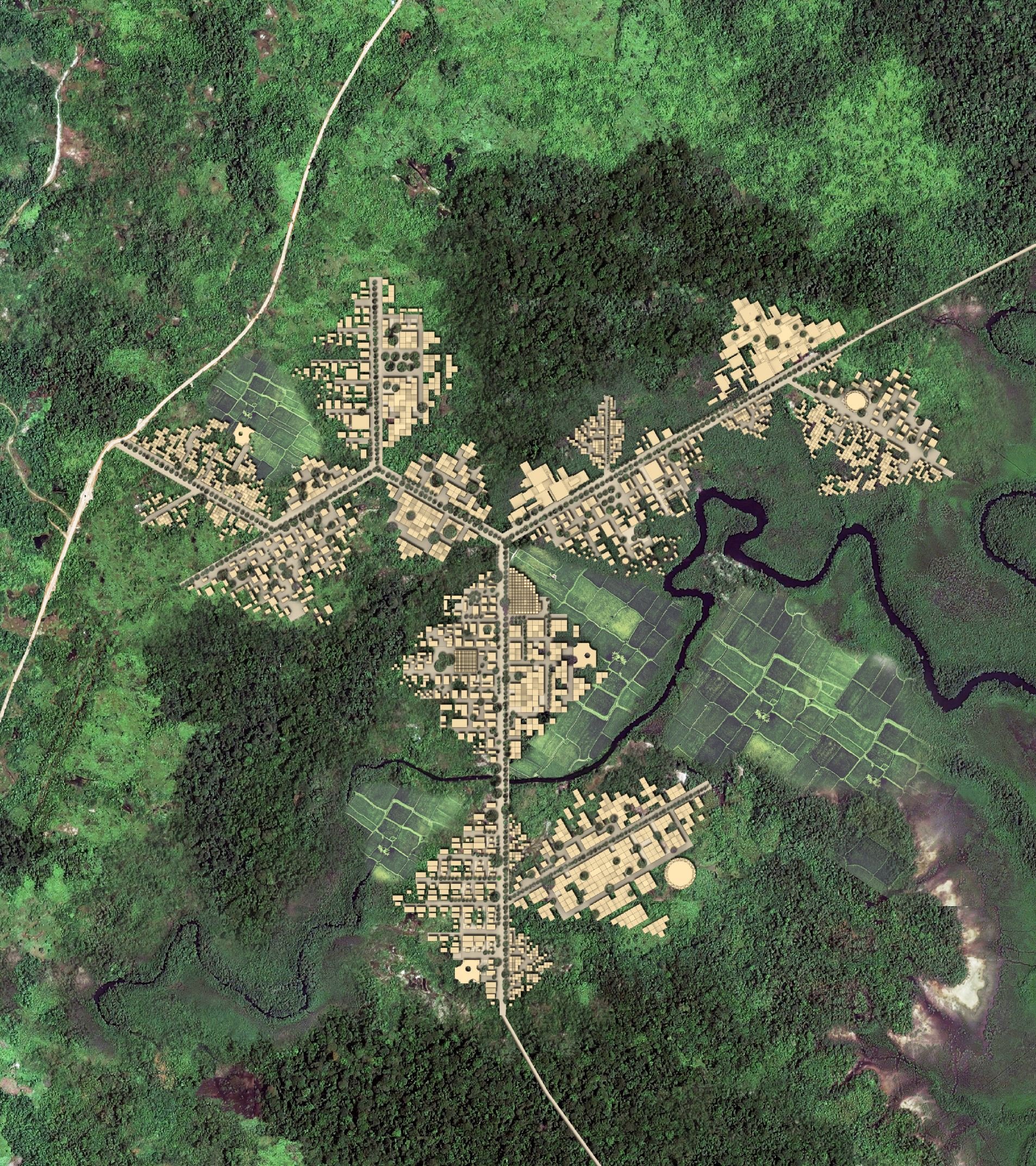
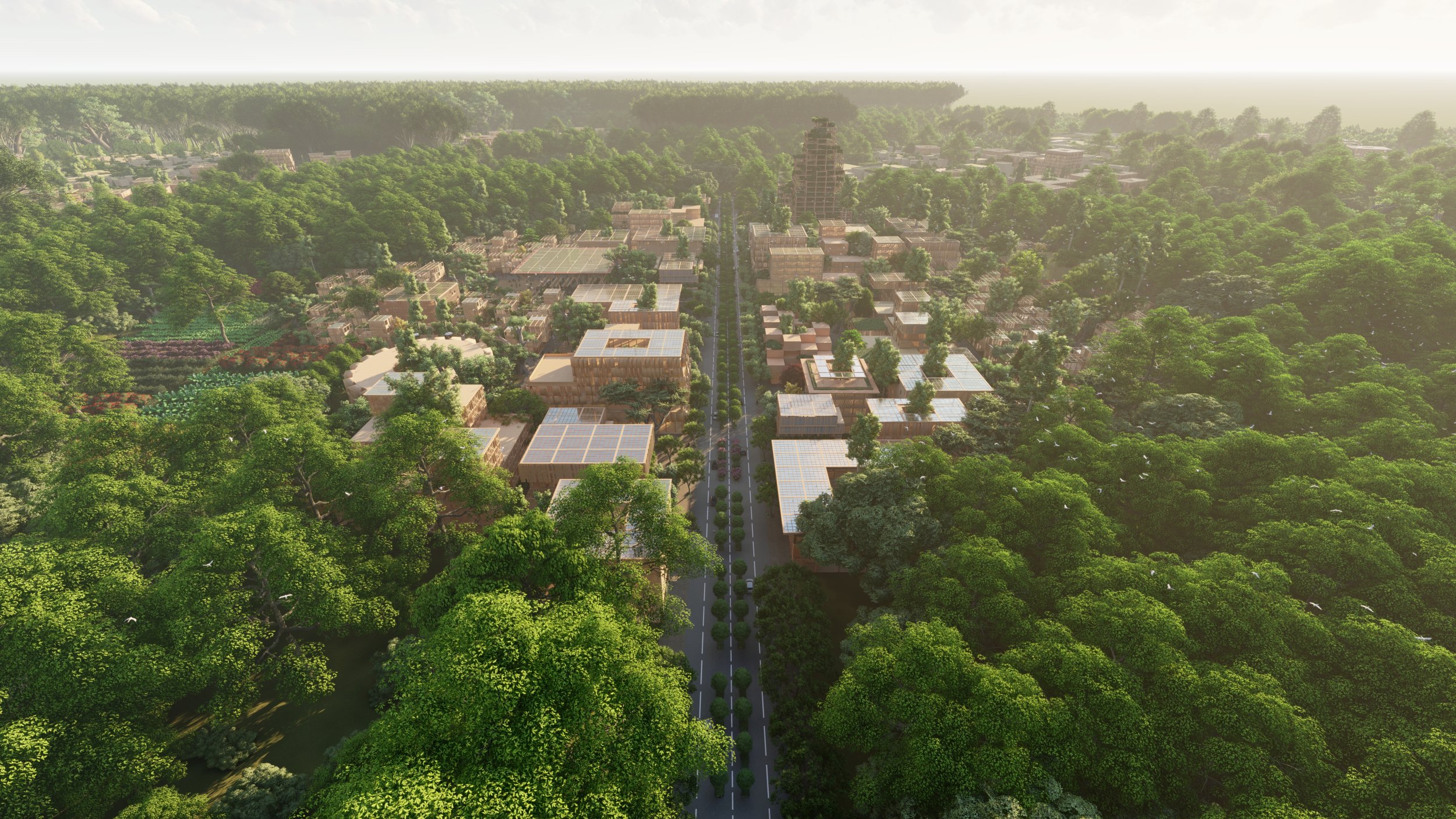
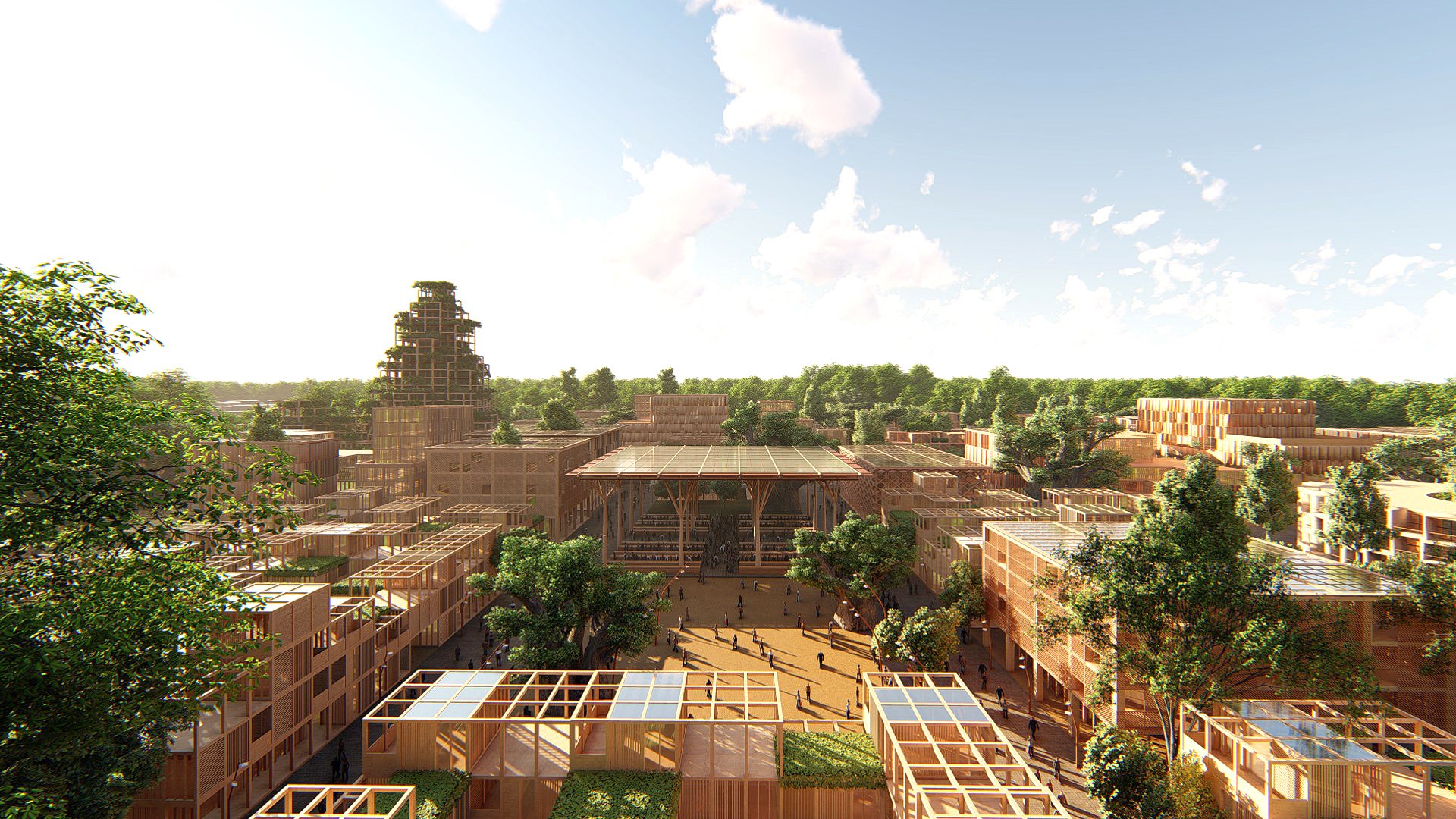
The city is designed to grow following natural principles developing a new type of linear branch city where all neighborhoods are adapted to their environment. The city would create mixed-use productive communities where people can live work and play in an environment connected to the world where nature will inspire new human habitat.
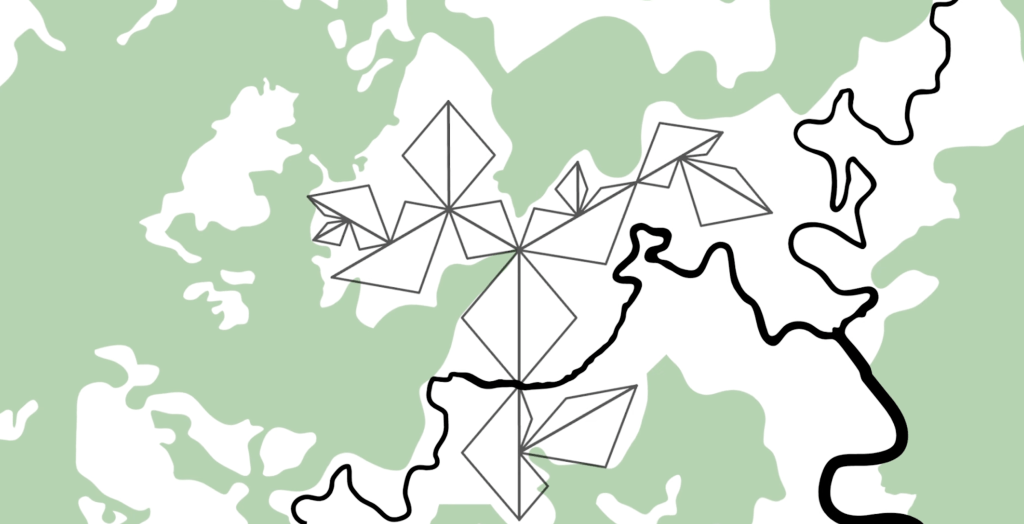
The Forest City Project faces the challenge of inventing how to inhabit the planet and making the fight against climate change a reality. Buildings will be built using local wood and they will be energy self-sufficient and will recycle their waters to produce food and vegetation.
While all this sounds great and looks amazing, I was left wondering if this was at all possible and would harvesting all these trees be a good idea? This question was asked in a recent BBC Podcast “Can We Build a Better World with Wood?” There is a lively debate between advocates of logging for building and those opposed. Michael Ramage of Cambridge University explains how the development of Cross-Laminated Timber makes it possible to build pretty much any building with wood while Tim Searchinger of Princeton University argues that turning forests into construction material has a high carbon cost for the planet.
The outcome wasn’t really clear. For me the answer was yes, but only if we do logging and forest management better. If we plant the right species, in the right way and harvest and replant in a more considered manner. There can absolutely be no logging of old growth forest. And this is probably not a panacea for all of our habitat needs.
What the Forest City does give us is another way we can think about our cities, that is more sustainable and more connected to the environment.
You want watch a short video on the project from one of the Architects HERE
The architecture practice, Built by Associative Data, website is HERE
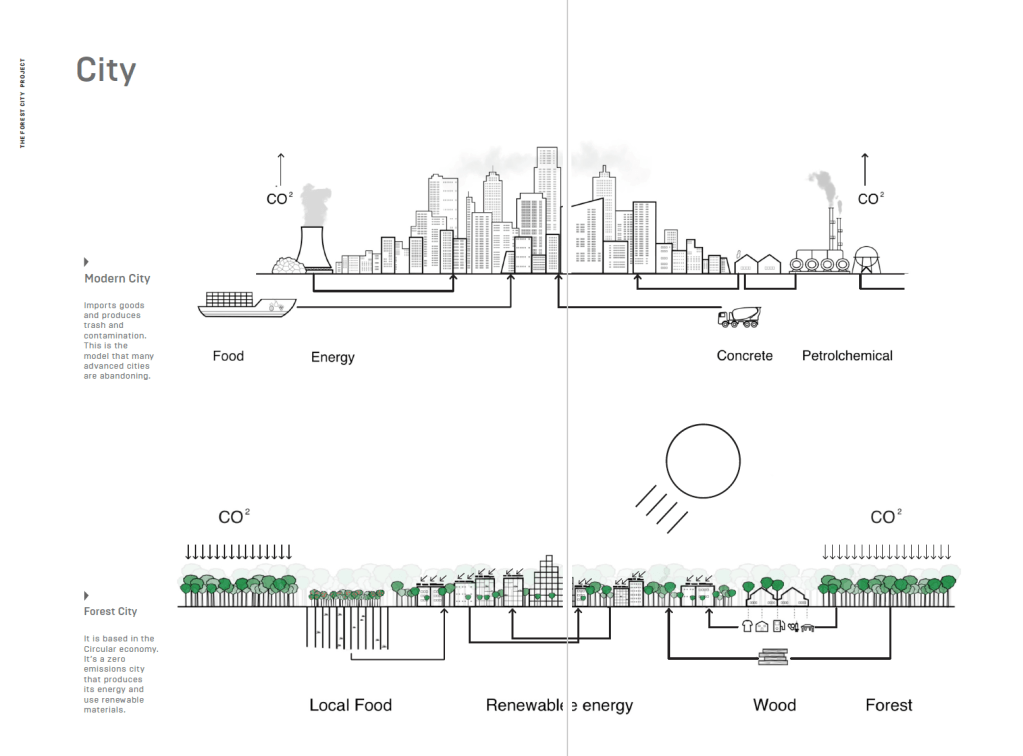
Note:
This post was created in #WordPress and can be viewed in the #Fedivers at: @owgf.org@owgf.org
OWGF has a Fediverse companion profile at: https://mastodon.world/@OWGF
OWGF is also on #Pixelfed here: https://pixelfed.social/OWGFhttps://pixelfed.social/OWGF
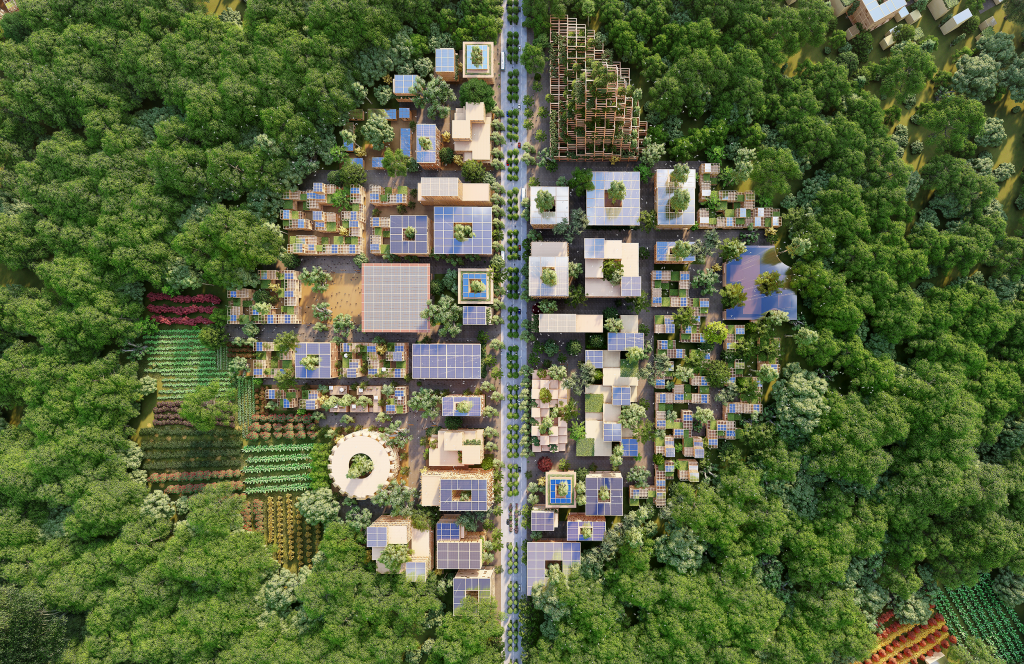
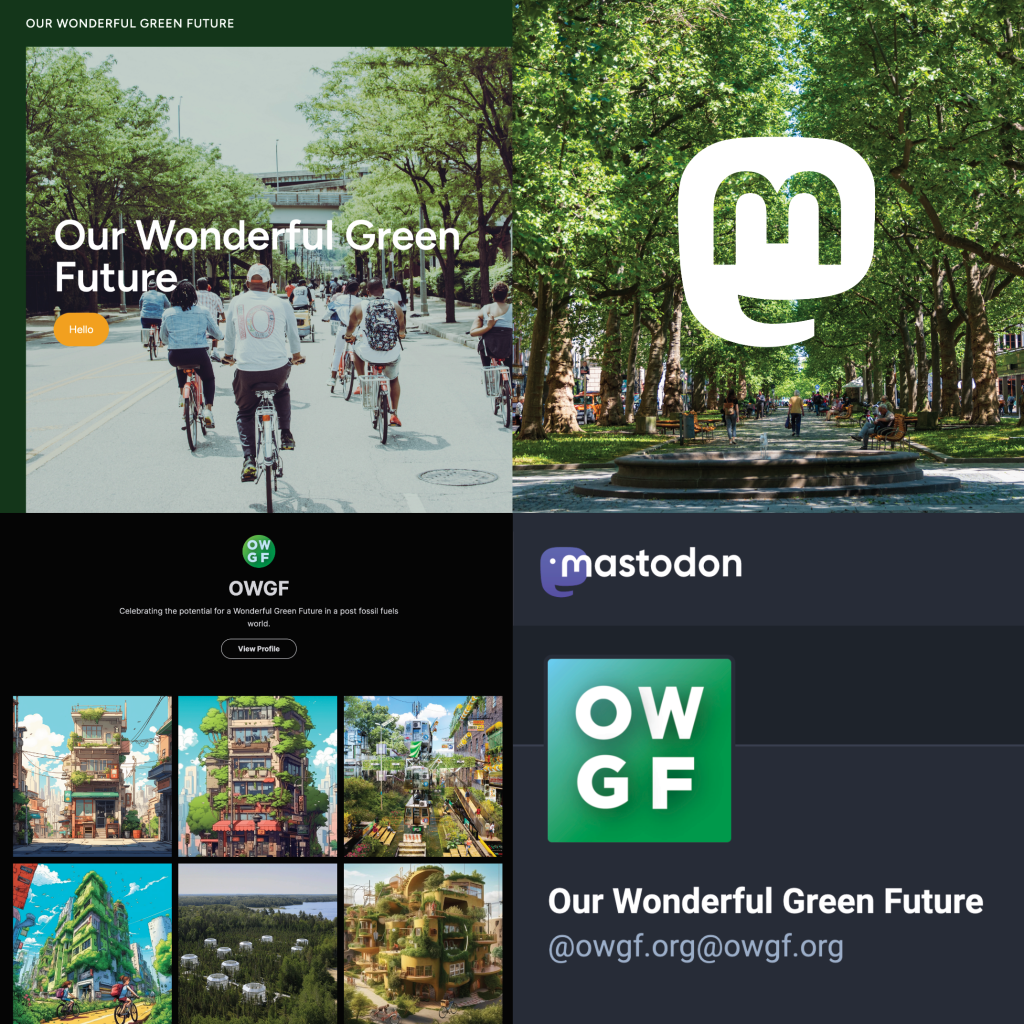
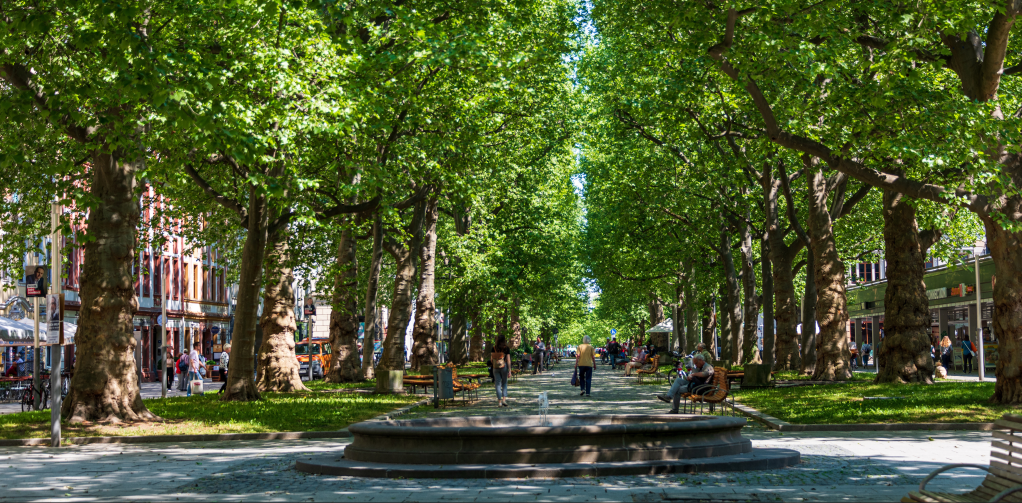



Leave a comment